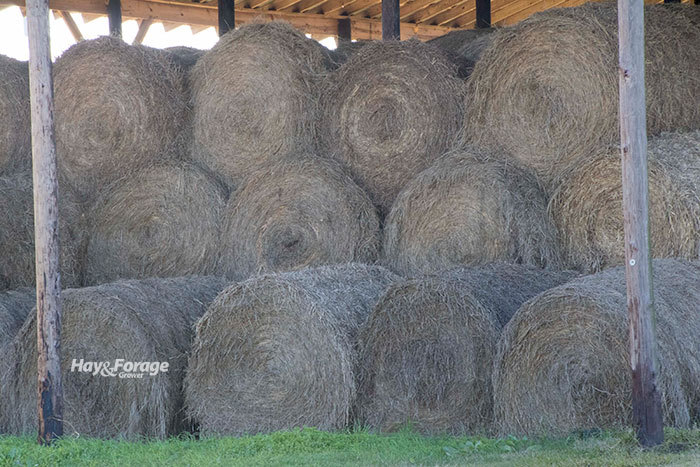
Hay comes in a variety of types, shapes, and prices. It’s relatively easy to count bales and determine tonnage for inventory purposes. Similarly, it’s also not difficult to calculate winter feed needs based on livestock numbers and the duration of time that hay will be fed.
But is there more to it than that?
Heather Gessner, a livestock business management field specialist with South Dakota State University Extension, says the pertinent question to ask is “Do I have enough bales to create a balanced ration that meets the nutritional requirements of my cow herd through each stage of production?”
To answer the livestock specialist’s question, forage samples need to be taken and analyzed for quality. This is then matched to livestock nutritional needs at their various stages of production.
“Because feed costs for the beef cow enterprise account for 75% or more of the total cow costs for the year, controlling them is a critical profit component for the producer,” Gessner notes.
Given that forages vary in price, dry matter, and quality, Gessner offers an example of three possible forage sources in the table below. She asserts that creating a balanced, low-cost ration can be achieved only when the nutrient analysis is known, and when producers invest time to compare their available options.
Analysis and feed values for three different forages.

“At first glance, the $50 per ton savings for the grass hay compared to alfalfa appears to be a solid economic decision,” Gessner explains. “However, alfalfa is a better option if protein is the needed nutrient.”
Adding in other forage sources such as corn silage can also be done to create a balanced, least-cost ration. “By inventorying the feed on hand and analyzing the feed, producers can determine what, if any, additional feedstuffs are required,” Gessner notes.
The livestock specialist suggests using the following formulas to make feedstuff comparisons. She uses the grass hay analysis from the table as an example to determine the cost of crude protein per ton.
Step 1:
Cost per ton ÷ (Percent dry matter/100) = Cost per ton of dry matter
Example: $150 ÷ 0.9 = $166.67 per ton
Step 2:
Cost per ton dry matter ÷ (Percent crude protein/100) = Cost per ton of crude protein
Example: $166.67 ÷ 0.055 = $3030.36
“Before buying ‘cheap’ feed, ensure it will be cost-effective when creating balanced rations this winter,” Gessner advises. “By inventorying the quantity and quality of feed harvested this summer, future purchases can be planned and budgeted for, thus allowing the creation of least-cost, balanced rations for the herd throughout all reproductive stages this winter.”

